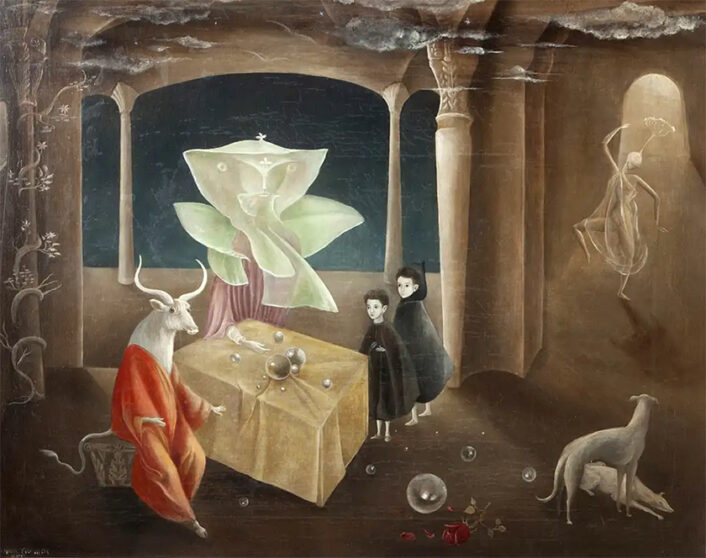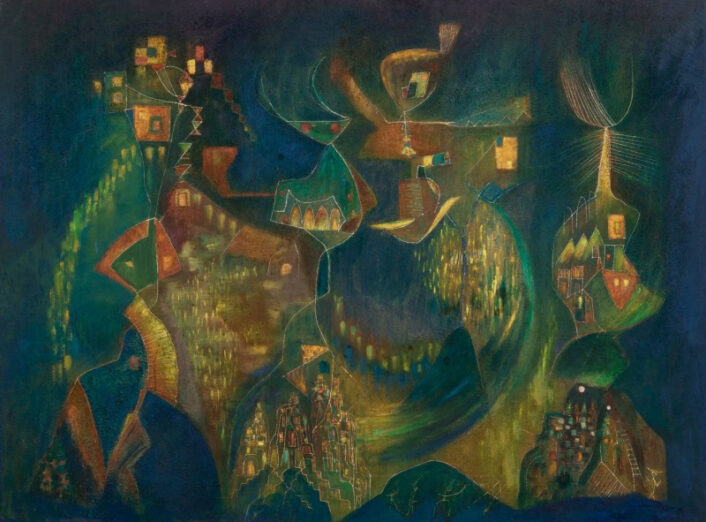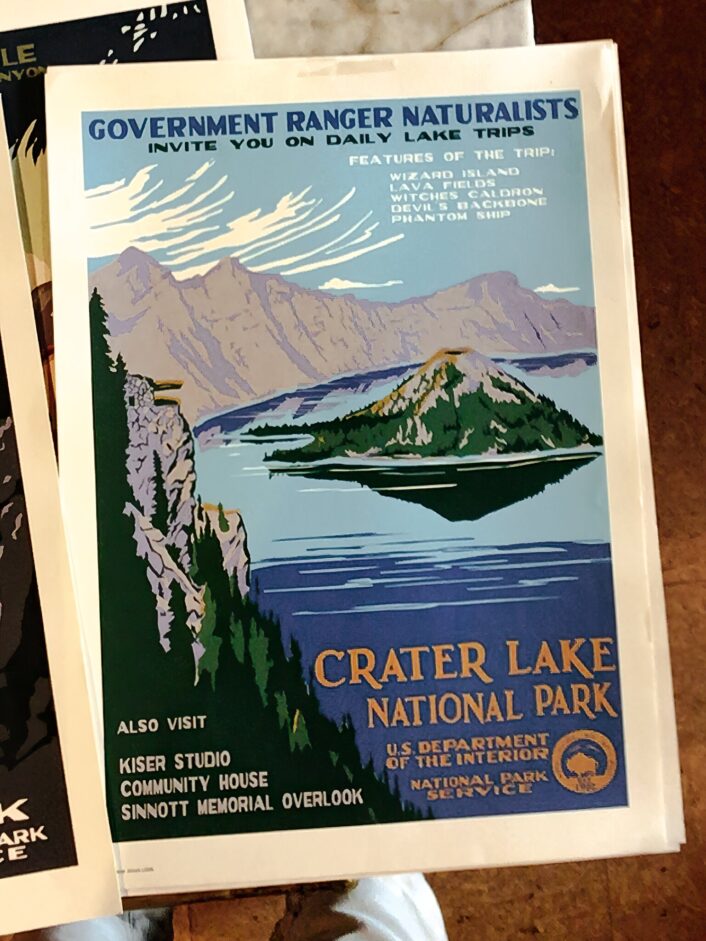Fine Art
Gertrude Abercrombie, Chicago’s very own Surrealist
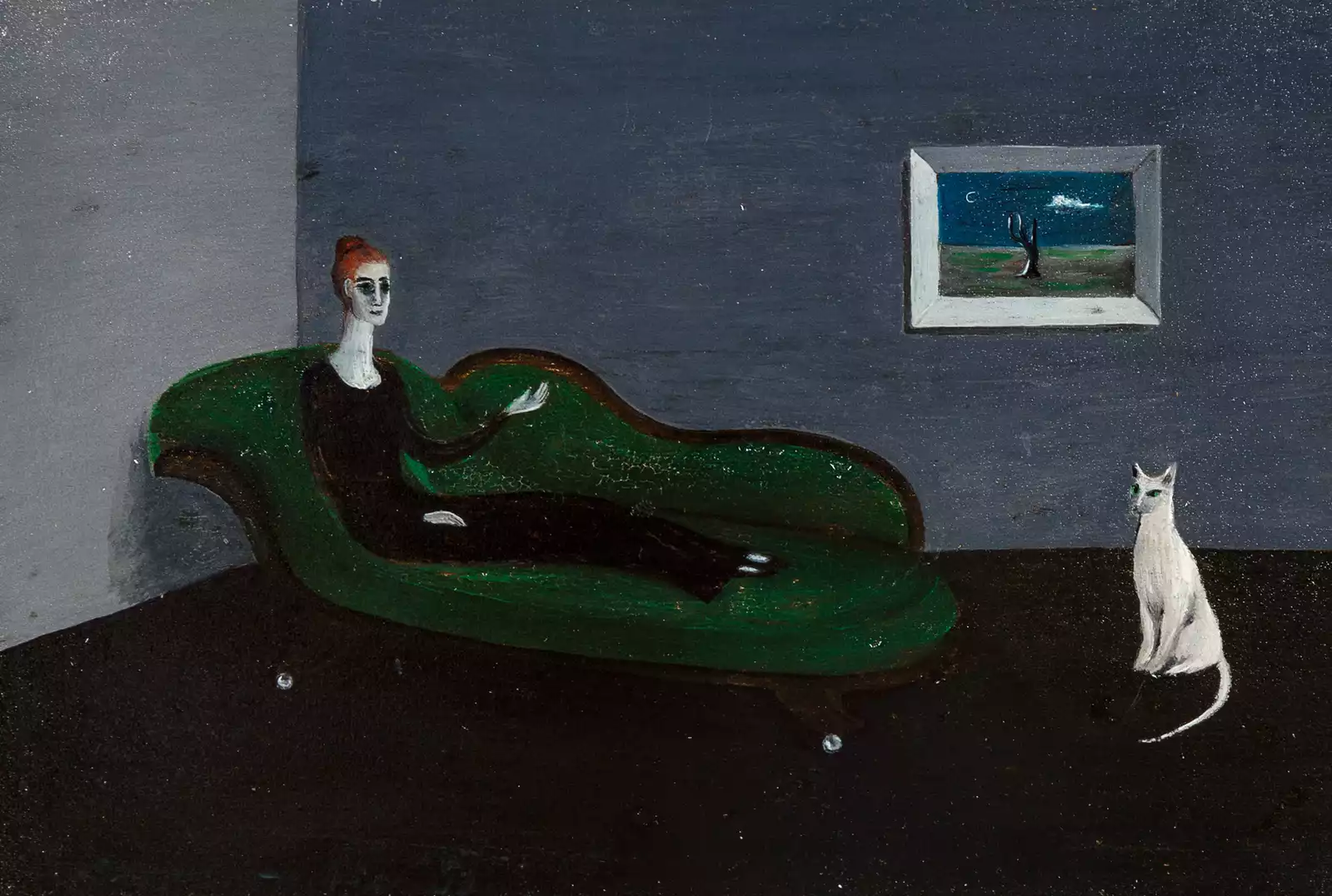
“Untitled (Countess Narone on Chaise with White Cat and Lonely Tree Painting),” 1951. Oil on masonite.
Image courtesy of: Artsy
Born at the beginning of the 20th-century, Gertrude Abercrombie was the only child of traveling opera singers who would go on to settle in Chicago. Abercrombie graduated from the University of Illinois with a degree in romance languages; however she soon realized that her true calling was art, specifically painting.
Even though she was never classically trained, Abercrombie studied at the Art Institute of Chicago and the American Academy of Art. In her early twenties, the artist worked for the Works Progressive Administration. At the time, those working at the WPA were regarded as “real artists.” With a weekly wage and provided art supplies from the WPA, Abercrombie was able to rent her own apartment and become a full-time artist.
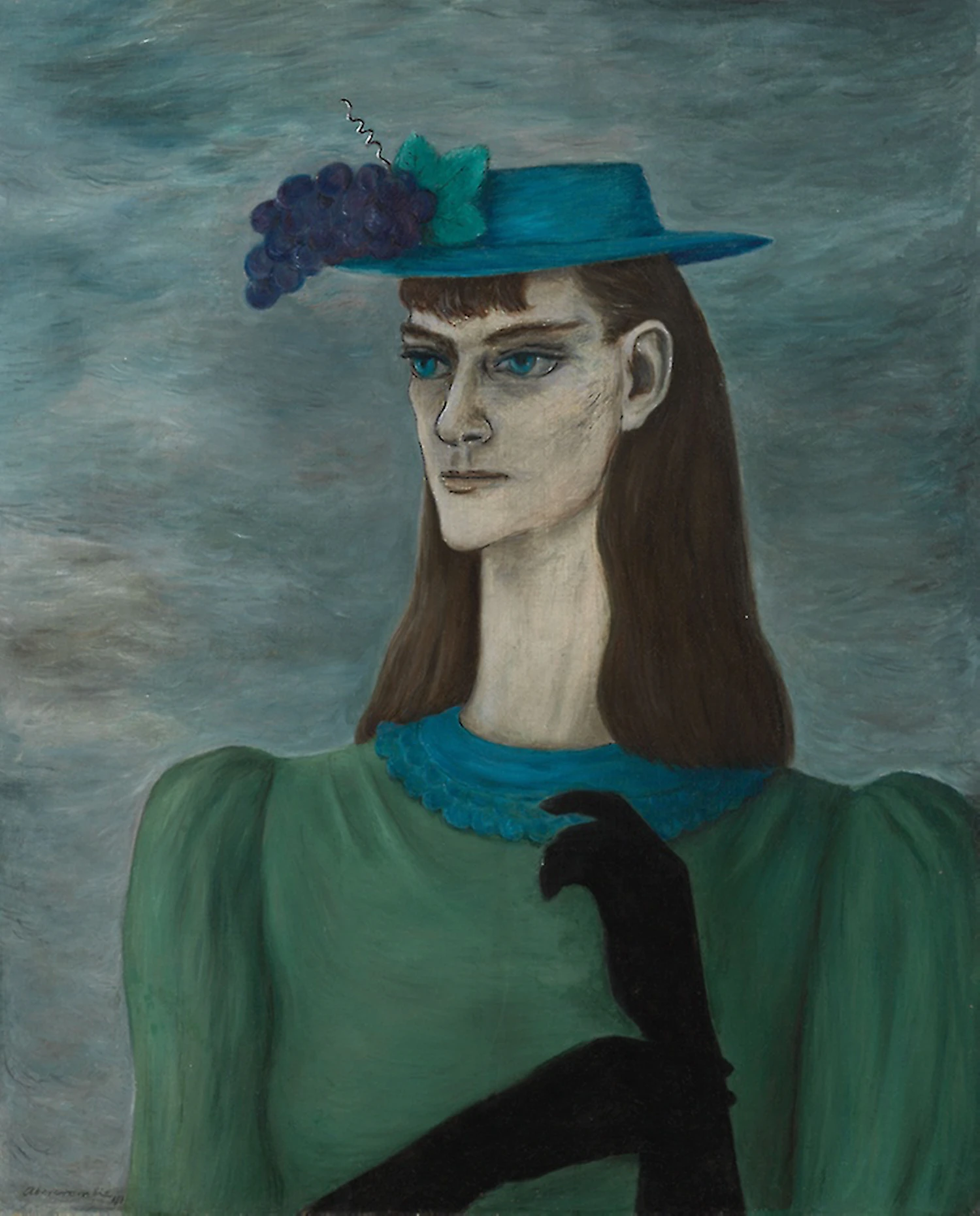
“Self Portrait of My Sister,” 1941.
The painting was actually a depiction of the artist herself; Abercrombie was an only child. Abercrombie idealized herself in the portrait with a slender neck, big blue eyes, and sharpened features.
Image courtesy of: Art Institute of Chicago
It was only after meeting Gertrude Stein that the artist started developing the Surrealist style that she would become known for. The unique style of work earned Abercrombie the titles of “The Queen of the Bohemian” and Queen Gertrude”. The self-proclaimed witch lived in a (courtesy of NPR) “ramshackle frame house on Chicago’s South Side, sweeping around in pointy black hats and capes.”
In 1944, Abercrombie was awarded her first solo exhibition with the Art Institute of Chicago. This, along with a group show at the University of Chicago’s Renaissance Society in 1945 and a solo show at the Chicago Public Library in 1948, propelled her to fame in Chicago.
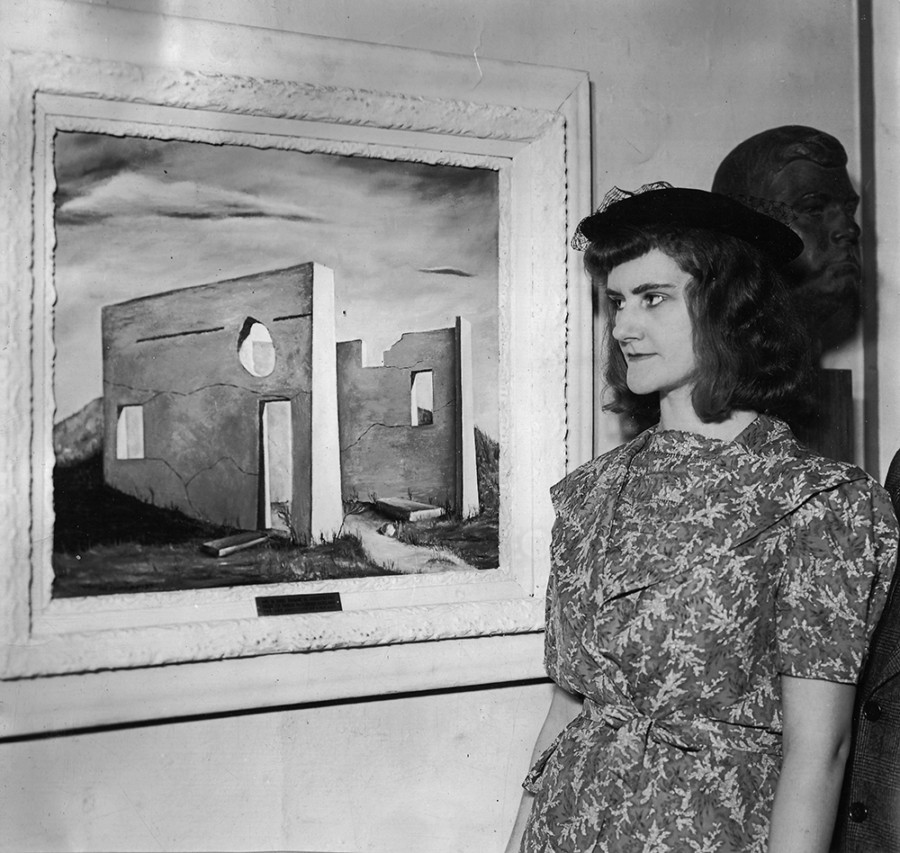
Abercrombie in front of “Slaughterhouse Ruins at Aldeo,” 1937.
Image courtesy of: Messy Nessy (photograph via KARMA)
Abercrombie’s early paintings were loosely Surrealist; however, as the years went on, she developed a specific style that drew (courtesy of Artland Magazine) “on the mysterious, dreamy realm of the subconscious.” The artist’s work would go on to establish a set of themes and symbols that included ostrich eggs, lightening bolts, self-portraits, and cats, among other subjects.
Often, her chosen symbols were placed in sparse, nocturnal interiors… this was explained as a way Abercrombie dealt with her recurring dreams, her ongoing themes, and her obsessions. Even though she learned a lot from master European Surrealists such as Giorgio de Chirico and René Magritte, Abercrombie’s Surrealism style was largely inspired by her beloved Midwestern surroundings.
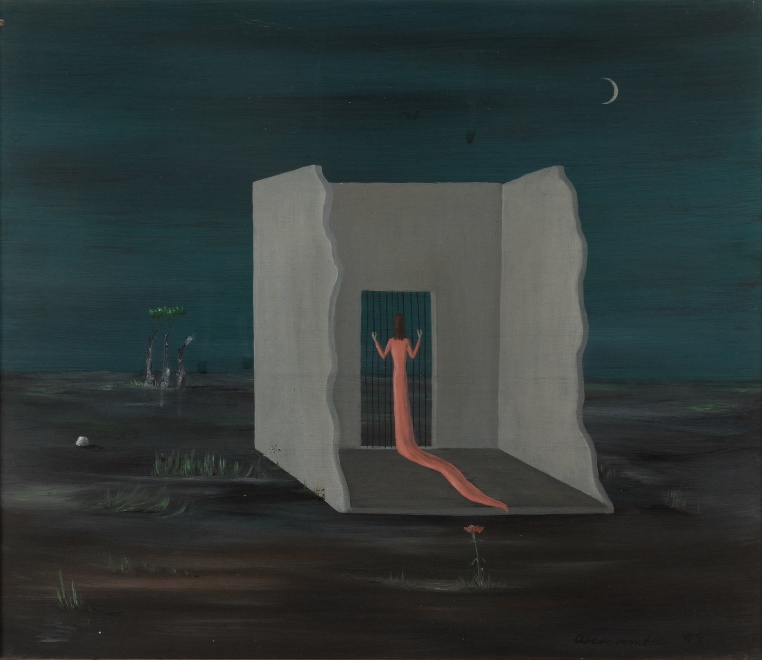
“Self-Imprisonment,” 1949.
Image courtesy of: Chicago Gallery News
Abercrombie’s paintings were mainly autobiographical; she often said that it was herself that she frequently painted. The figures she portrayed we mostly representations of herself… she did not consider herself attractive and her portraits were a way for her to capture unsatisfied emotions. Within the art community, Abercrombie’s self-portraits became known as “Psychic Self-Portraits.” She never tried to capture her actual features… rather, the facial expressions were a portrayal of mental or emotional states.
Abercrombie also became know for her “door paintings.” In those paintings, doors were placed outside, in unusual settings… acting “like mysterious barriers.” The doors, which are normally placed inside homes, represented the question of what lies ahead… of the unknown.
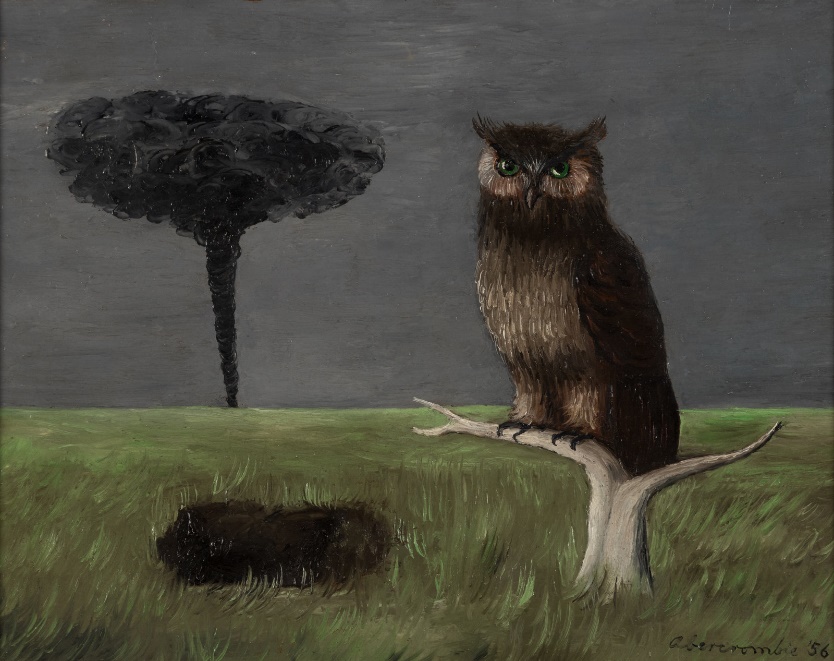
“Owl and Tornado,” 1956.
Image courtesy of: Chicago Gallery News
Even though her style was clearly Surrealist, Abercrombie was not specifically associated with the largest artistic movement of her time. There are two explanations she was often in a slightly removed group: living in Illinois, she was geographically removed from the epicenter of Surrealism, and as a female, Abercrombie was frequently overshadowed by her male contemporaries.
Thankfully, over the past several years, more and more interested parties have become intrigued with learning more about Abercrombie. We love that our hometown girl is finally getting the long-overdue love she very much deserves!
